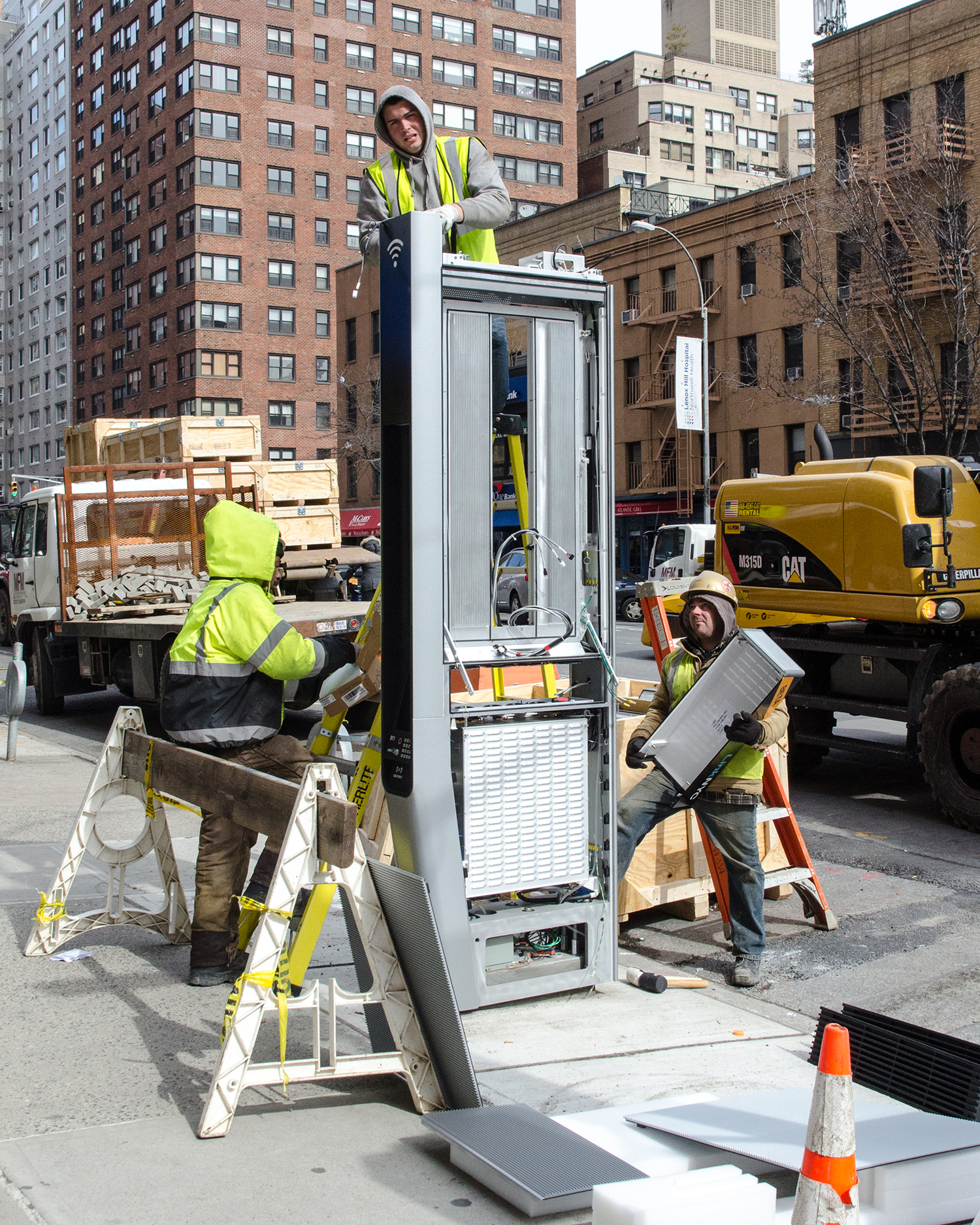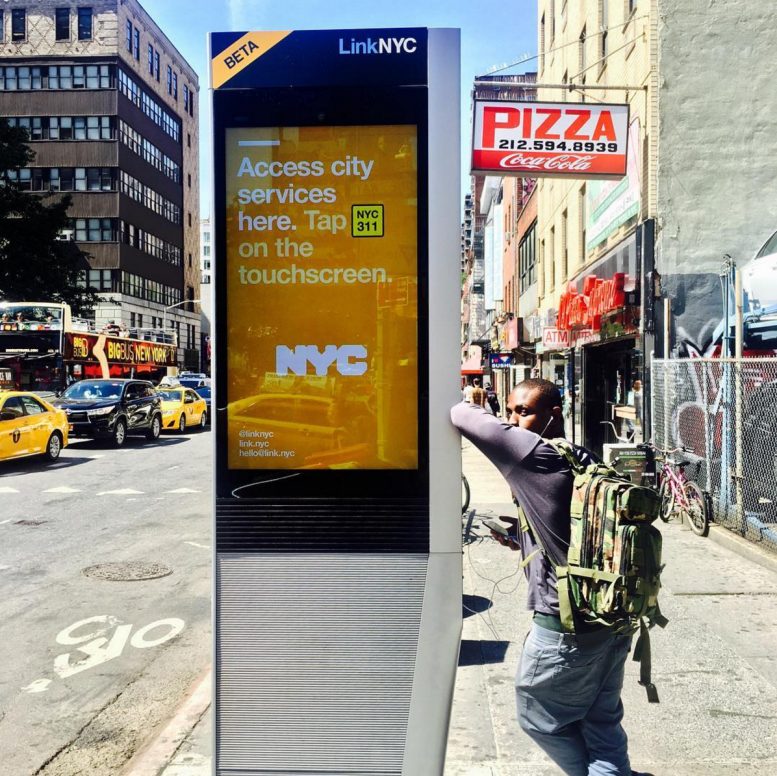For a long time, with the proliferation of cell phones, the payphone has been mostly just a historical curiosity. For years now, they have actually been disappearing from New York City streets. Since January, some of them have been replaced by new public communication structures. Now, with a vote Tuesday by the Landmarks Preservation Commission, those structures will be headed to historic districts and other designated sites.
The structures are called LinkNYC, and are made by a consortium called CityBridge out in Long Island City. They emit a publicly-accessible Wi-Fi signal, have multiple charging ports, and have a screen on which free phone calls can be made and maps can be pulled up.
Some of them have advertising on the side, with each ad lasting 15 seconds (with a one-second fade). Some of them do not have advertising. The content is mostly pure advertising sold via CityBridge. However, five percent of it is public service announcements or other non-advertising content.
The design, by Antenna Design, was approved by the Public Design Commission (PDC). The units with advertising measure 114-inches-tall by 11-inches-wide by 35-inches-deep at the top. The units without advertising measure 123-inches-tall by 11-inches-wide by 16-inches-deep at the top. Both types are shorter than a Citi Bike kiosk, which stands 180-inches-tall.

The innards of a LinkNYC kiosk. Credit: Edward Blake/Flickr
There will be special rules for the installation of these kiosks in historic districts and on other designated sites, rules that go beyond the PDC’s own rules. Any existing single phone booth may be replaced by a Link, but any newly-located kiosks must be approved by the LPC. Further, no Link may be installed within 100 feet of another.
Commissioners inquired about the possibility of more non-advertising content and shorter displays on kiosks located on designated sites, but were told it both conflicts with the business model and is technically unfeasible.
While not wild about that reply, the commissioners present Tuesday voted unanimously to approve rule allowing the structures’ construction. That vote followed a public hearing held in May, where several alternatives were proposed, including putting Wi-Fi transceivers in light poles.
Subscribe to YIMBY’s daily e-mail
Follow YIMBYgram for real-time photo updates
Like YIMBY on Facebook
Follow YIMBY’s Twitter for the latest in YIMBYnews



This is a convenience of technology for people, finger touch screen and can communicate quickly.
More ridiculous hypocrisy. It’s okay for these horrific looking things (that are the result of yet another poorly thought-through initiative) to stand in sharp contrast to look of a historic block, but any property owners on the same block that wish to make modest changes (such as railings make their stoops safer) or install energy efficient changes (such as windows or lights) get put through the Landmarks ringer. This truly is the Tale of Two Cities. The mayor and the political elites get what they want and the rest of us get screwed.
Yeah, nothing says Brooklyn Heights Historic District more than a modern stainless steel box. Not.
I think these sleek, functional kiosks look fine, and though I don’t always agree with the LPC, this was the right decision. First, because if we want historic preservation to succeed and continue, it has to be carried out as part of the contemporary world (where free Wi-Fi, phone calls, and charging are public goods that will benefit both residents of and visitors to historic sites), not in some imaginary “time bubble” divorced from the real world. Secondly, because an attempt at false contextualism — disguising the units as something else — would have been even worse. That’s an approach for Disneyland, not Brooklyn Heights or Greenwich Village.